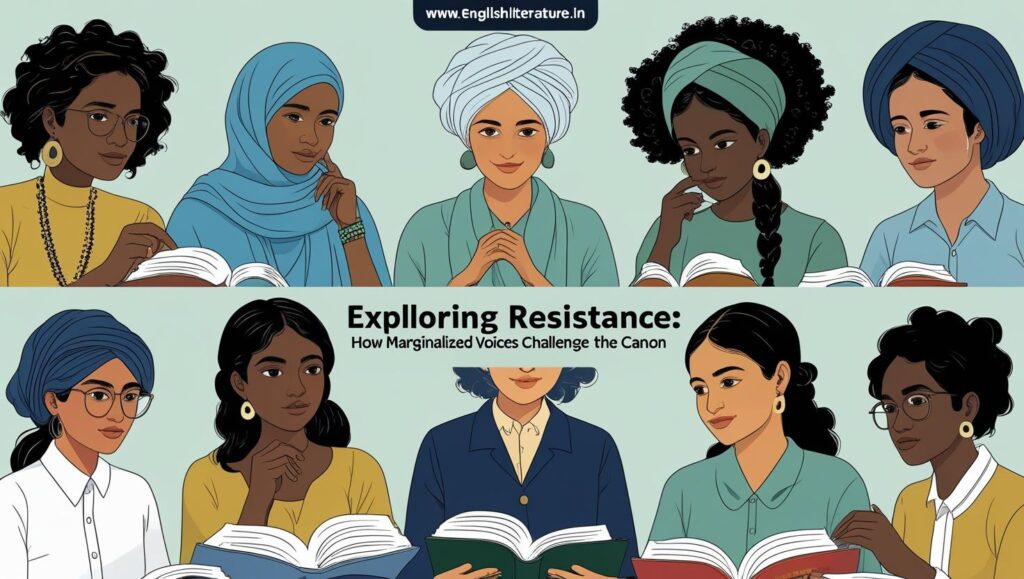Exploring Resistance: How Marginalized Voices Challenge the Canon
Introduction
What compels a voice—long stifled or disregarded—to rise and reshape literary history? Every classic in the canon was, at some point, new, daring, and sometimes controversial. Yet, for centuries, dominant cultures have dictated what counts as “canonical” literature, often sidelining the works and voices of marginalized groups. Today, the literary landscape is richer and more diverse, thanks to writers who used their pens as instruments of resistance. These authors—from all backgrounds—challenge genre, narrative conventions, and the very boundaries of the canon itself, inviting readers to reconsider whose stories matter, and why.
Historical and Critical Context
The literary canon, traditionally defined, refers to a body of works considered the most important and influential in shaping Western culture and thought. Historically, this list was overwhelmingly homogenous: white, male, Western, and upper-class voices dominated. However, in the late 20th century, movements such as postcolonialism, feminism, and critical race theory began to interrogate these boundaries, arguing that the canon reflected the interests of the powerful rather than the diversity of human experience.
Toni Morrison, discussing the exclusionary nature of the American canon, notes: “Canon building is empire building. Canon defense is national defense. Canon debate, whatever the terrain, nature, and range… is the clash of cultures”. Morrison’s insight foregrounds the canon as a site of power—one that marginalized writers contest and transform.

Notable Authors and Key Works
Resistant voices span continents, genres, and eras. Here are just a few authors whose works have redefined literary landscapes:
- James Baldwin (African American Literature, 20th Century):
- Baldwin’s novels like Go Tell It on the Mountain and essays such as Notes of a Native Son confront racism, identity, and sexuality in America. In The Fire Next Time, Baldwin writes, “You were born where you were born and faced the future that you faced because you were black and for no other reason.”
- Chimamanda Ngozi Adichie (Postcolonial Fiction, Contemporary):
- Adichie’s Half of a Yellow Sun and Americanah challenge Western narratives about Africa and give nuanced explorations of identity, migration, and femininity.
- Mahasweta Devi (Indian Literature, 20th Century):
- Devi’s short stories and novels, such as Draupadi (translated by Gayatri Chakravorty Spivak), highlight the oppression faced by Adivasi and Dalit women in India, using grassroots realism to expose systemic injustices.
- Jean Rhys (Modernist Literature, Early 20th Century):
- Wide Sargasso Sea reimagines Charlotte Brontë’s Jane Eyre from the perspective of Bertha Mason, the “madwoman in the attic,” exploring colonialism, gender, and identity.
Key Themes in Resistance Literature
Identity and Representation
Marginalized writers frequently interrogate identity—racial, gendered, national, and more. Their works challenge mono-cultural perspectives and broaden discussions of literary merit.
Power and Voice
Who is allowed to speak? Who is listened to? Resistance literature critiques systems of power both within and outside texts. The act of writing itself becomes “a form of rebellion against the imposed silence” (Gloria Anzaldúa, Borderlands/La Frontera).
Memory and History
These works often challenge historical amnesia by re-centering silenced or erased histories. For example, Leslie Marmon Silko’s Ceremony reclaims Native American traditions and narratives excluded from mainstream American literature.
Literary Techniques: Symbolism, Structure, and Counter-narrative
Marginalized writers adapt and subvert traditional literary techniques to serve resistant ends:
- Symbolism: Powerful symbols—chains in slave narratives, the “veil” in Du Bois’ writings, or rivers in African literature—convey layered meanings and critique social realities.
- Narrative Structure: Authors like Toni Morrison in Beloved use fragmented, nonlinear storytelling to echo the trauma of slavery and suppressed memory.
- Character Analysis: Antagonists and protagonists often subvert expectations—think of the anti-hero in Ralph Ellison’s Invisible Man or the outsider’s perspective in Arundhati Roy’s The God of Small Things.
- Intertextuality and Rewriting: Jean Rhys’s Wide Sargasso Sea is a prime example of “writing back” to the canon, offering a counter-narrative to Brontë’s classic.
Critical Impact and Ongoing Debates
As classrooms and publishers become more inclusive, the question remains: should we expand the canon or dismantle it entirely? Critics like Harold Bloom defend “the Western canon” for its supposed universality, while others argue for a more dynamic and pluralistic definition of literary value. As Audre Lorde asserted, “The master’s tools will never dismantle the master’s house”—resistant voices urge not just inclusion, but fundamental change in how we define literary greatness.
FAQ: Exploring Resistance and the Canon
1. What is the literary canon, and why is it controversial?
The canon refers to recognized “classics” often prioritized in academic studies. Critics argue it excludes diverse voices and perspectives.
2. How do marginalized authors challenge the canon?
By telling stories that have historically been ignored or misrepresented, using innovative forms and themes, and sometimes directly re-writing canonical texts.
3. Can you give examples of resistance literature?
Works like James Baldwin’s Go Tell It on the Mountain, Jean Rhys’s Wide Sargasso Sea, and Mahasweta Devi’s Draupadi all exemplify this tradition.
4. What literary techniques define resistance writing?
Symbolism, nonlinear structures, first-person testimony, and the use of vernacular or hybrid languages are common.
5. Are resistant texts only critical, or do they offer alternatives?
They do both—critiquing dominant narratives and providing new ways to imagine community, history, and identity.
6. Why is “writing back” to the canon important?
It exposes hidden ideologies in so-called universal stories and reclaims space for marginalized perspectives.
7. Are these debates present in Indian literature?
Absolutely. Indian Dalit and feminist writers, for example, challenge both colonial and upper-caste canons.
8. How can readers and educators support marginalized voices?
By reading, teaching, and reviewing works outside the traditional canon, and by listening to the experiences of marginalized communities.
9. Does including more voices dilute “great literature”?
Many critics argue the opposite: it enriches literature, revealing new depths of style, theme, and insight.
By embracing marginalized voices, literature becomes a far more dynamic and inclusive field—one not merely of resistance, but of possibility and renewal.
The 100 Most Famous Quotes in English Literature


F*ckin¦ tremendous issues here. I¦m very glad to see your article. Thanks a lot and i’m having a look ahead to touch you. Will you kindly drop me a e-mail?